Affiliate links on Android Authority may earn us a commission. Learn more.
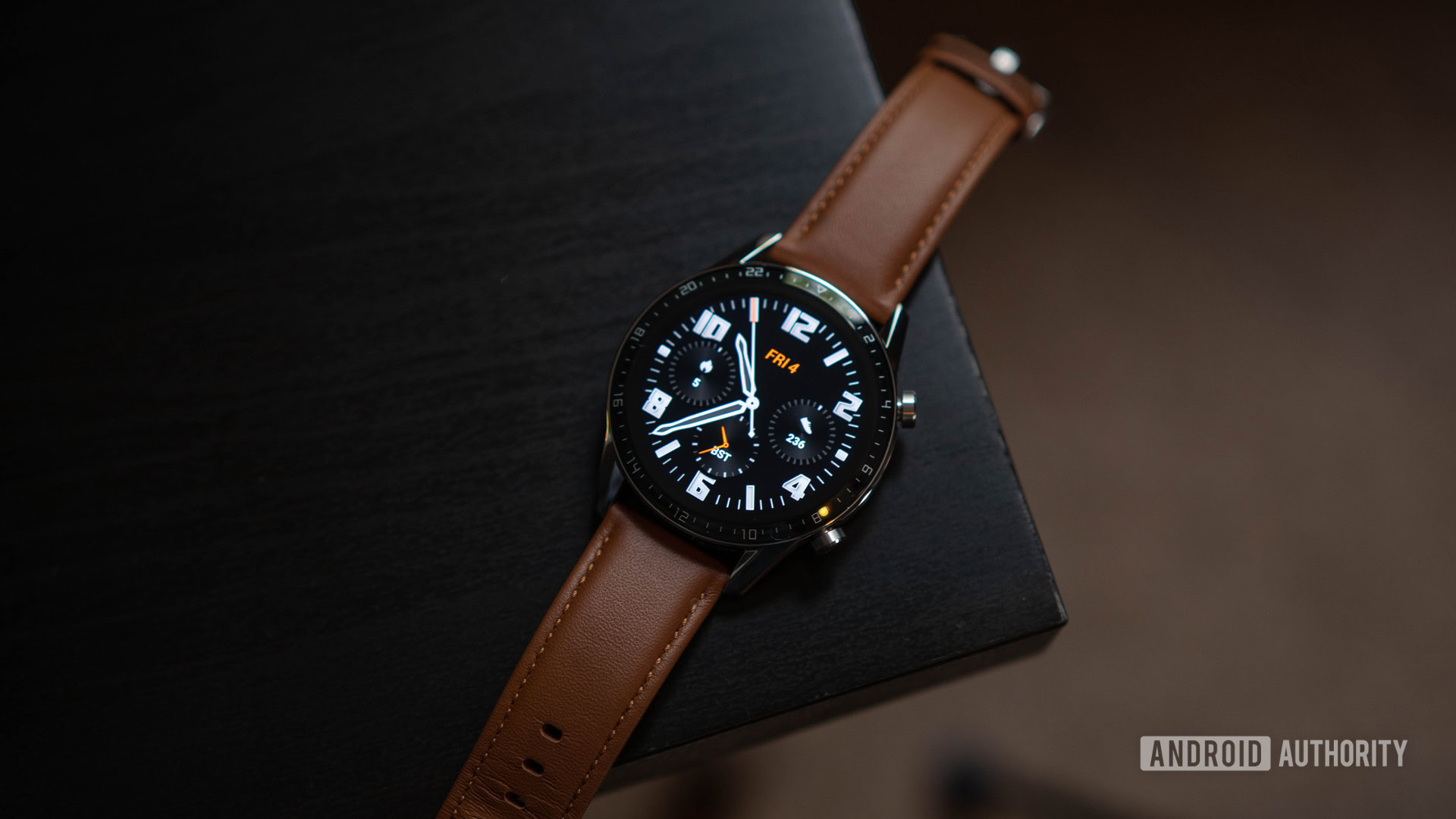
HUAWEI Watch GT 2 review: Great hardware, limited software
Published onJune 19, 2022
Huawei Watch GT 2
What we like
What we don't like
Huawei Watch GT 2
Smartwatches are difficult to get right. Some of HUAWEI’s past offerings have fallen short, sometimes with respect to software, other times with battery life. Other companies have tried to do too much — putting a tiny smartphone on your wrist — with mixed results. Apple’s WatchOS and Google’s Wear OS certainly offer more tools and features than HUAWEI’s Lite OS, but is more always better? The Watch GT 2 aims to strip everything superfluous from a smartwatch and nail the basics.
Has HUAWEI improved its software, or is the Watch GT 2 all show and no go? In Android Authority’s HUAWEI Watch GT 2 review, you’re about to find out.
HUAWEI Watch GT 2 review: The big picture
The smartwatch software world is currently a bit of a mess, at least on Android. I’m sure you’ve heard this time and again, but it needs to be stated. Tizen, Wear OS, Fitbit OS, and HUAWEI’s Lite OS simply haven’t been able to compete with Apple’s powerful wearable OS in raw functionality and seamless tie-ins with phones.
That hasn’t changed yet, but the overall smartwatch experience has improved significantly over the last few years. Moreover, some of my biggest complaints concerning Android-compatible smartwatches have been resolved. That said, while I commend HUAWEI for its excellent hardware, there’s still room for improvement in the software.
Also read: HUAWEI Watch GT review | HUAWEI Watch GT 2e review
Last year’s HUAWEI Watch GT had some issues, particularly with the laggy interface. The differences in hardware this year aren’t as big as you might expect — the Watch GT 2 and its predecessor are housed in similar external shells. The main improvements with the Watch GT 2 lie under the hood with performance, stability, health tracking, and battery life. The GT 2 isn’t a massive upgrade from the GT, so the question becomes whether the improvements that have been made are enough to recommend it.
Design and hardware
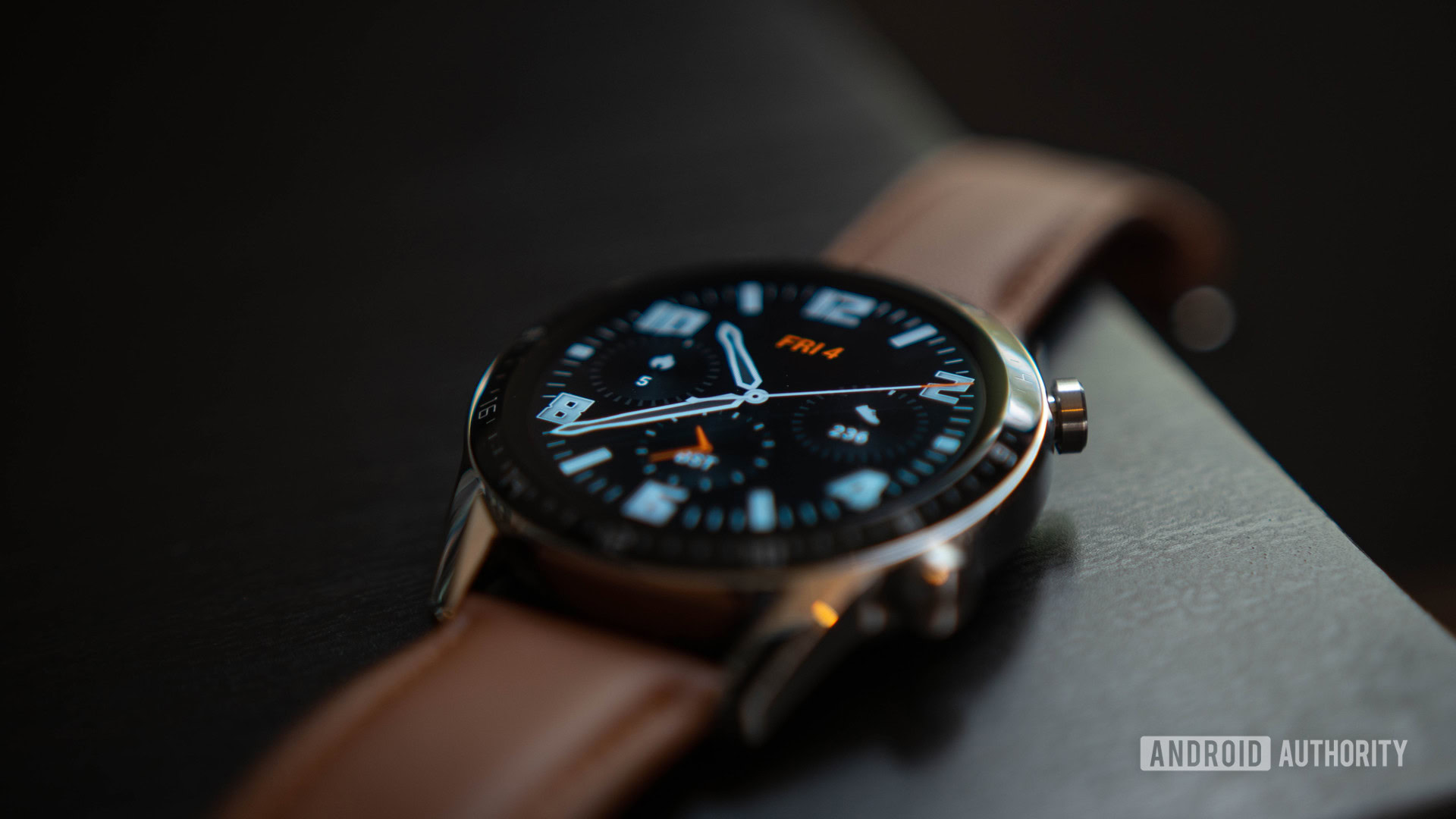
- 42/46mm models
- 46mm: 1.39-inch, 454 x 454 AMOLED
- 42mm: 1.2-inch, 390 x 390 AMOLED
- Stainless steel materials
- 5ATM
- Kirin A1 chip
This smartwatch is gorgeous. The Classic version takes a more executive approach than the previous model, and with its leather band, I’m really digging the industrial design. The 46mm version strikes me as the far nicer looking hardware of the two size options — yes, the design of the two sizes differs somewhat. The smaller option is more sleek and elegant with curved glass and minimal bezels, while the model I have looks smarter and more fit for business with its chrome-like bezel and minute diver’s watch numbering surrounding the display. There’s also a Sport version of the large edition that comes with a standard silicon strap.
Physical features of the Watch GT 2 are few, yet well-conceived. There isn’t a dial or crown, but there are two physical buttons on the right side. One of these is the home button, which also brings up the built-in app selector, and the other is specifically for health tracking and launching workouts.
This is a very pretty watch.
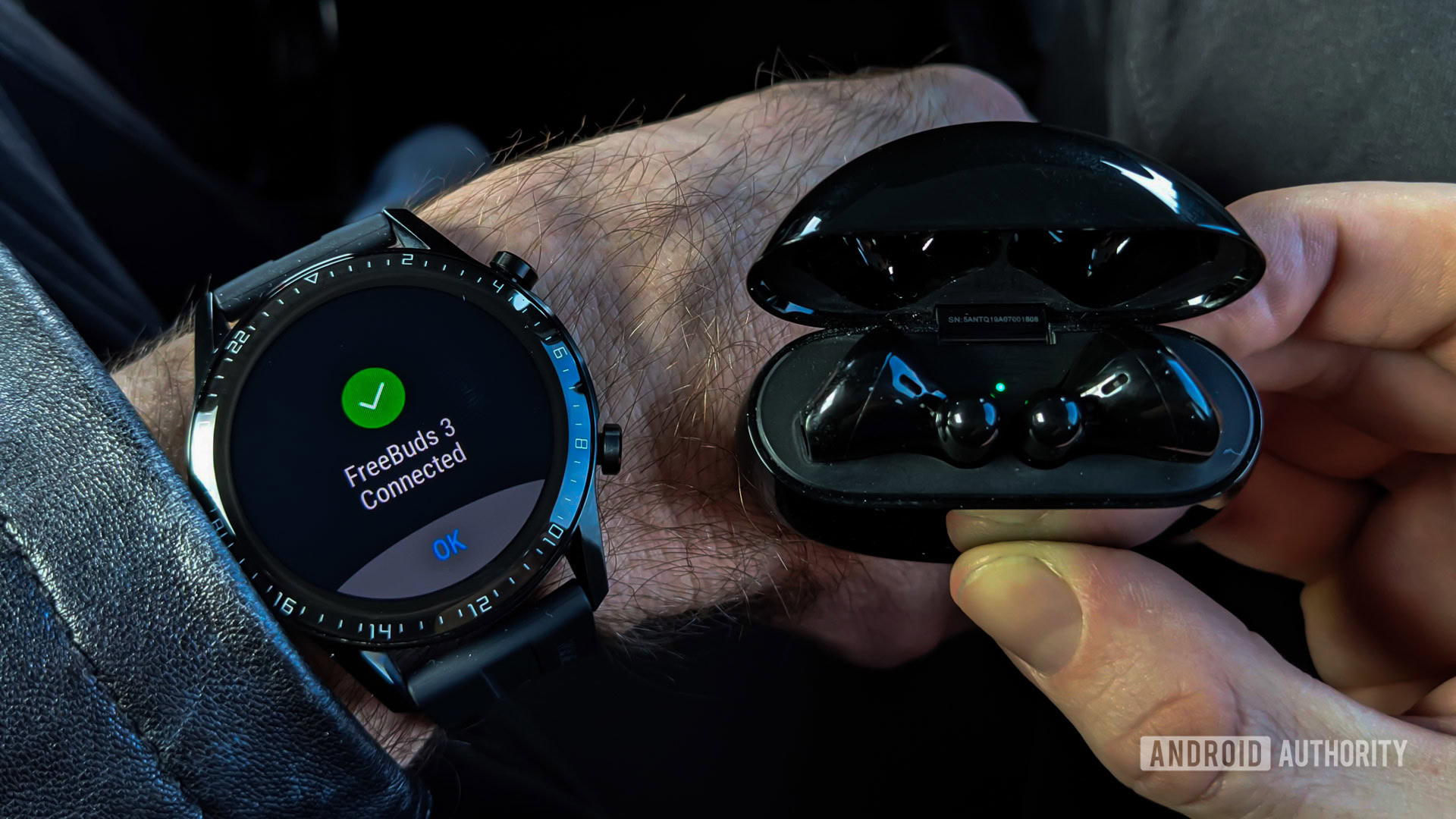
At 326ppi, the GT 2’s display is incredibly sharp. The AMOLED panel is nice and bright outdoors but could be slightly brighter at its highest setting. It’s not much of a worry for me here in the dreary UK, but this could be an issue for those in sunnier places.
The watch doesn’t feel chunky or overly bulky on my wrist. It fit comfortably under shirt sleeves and didn’t get in the way during a workout. If you’re used to having a regular-sized men’s watch on your wrist, you’ll feel right at home wearing the GT 2. If you have slimmer wrists, you’ll want to go for the smaller model.
The two-week battery life that HUAWEI advertises is pretty on point — as long as you leave some of the more advanced features off and don’t do too much GPS exercise tracking. For instance, just enabling the always-on display (AOD) will instantly halve your battery life. Furthermore, if you’re tracking a two-hour run every day, don’t expect more than five days’ battery life. But even so, five days of heavy fitness tracking on a smartwatch with a great display like this one doesn’t happen too often. HUAWEI has done a brilliant job at mixing their in-house hardware with the software to create this chart-topping battery life.
Don’t miss: Garmin Venu 2 review: A worthy sequel
With sleep tracking on and the always-on display disabled, I got just under two weeks of battery life during my HUAWEI Watch GT 2 review. I enabled the AOD since charging it (the one time I’ve done so) and the Watch GT 2 battery has me on track for a week’s worth of battery. Of course, your mileage may vary depending on how much GPS activity tracking you do, whether you’re using the watch for music playback, if you have the AOD enabled, what your screen time-out is, and so on.
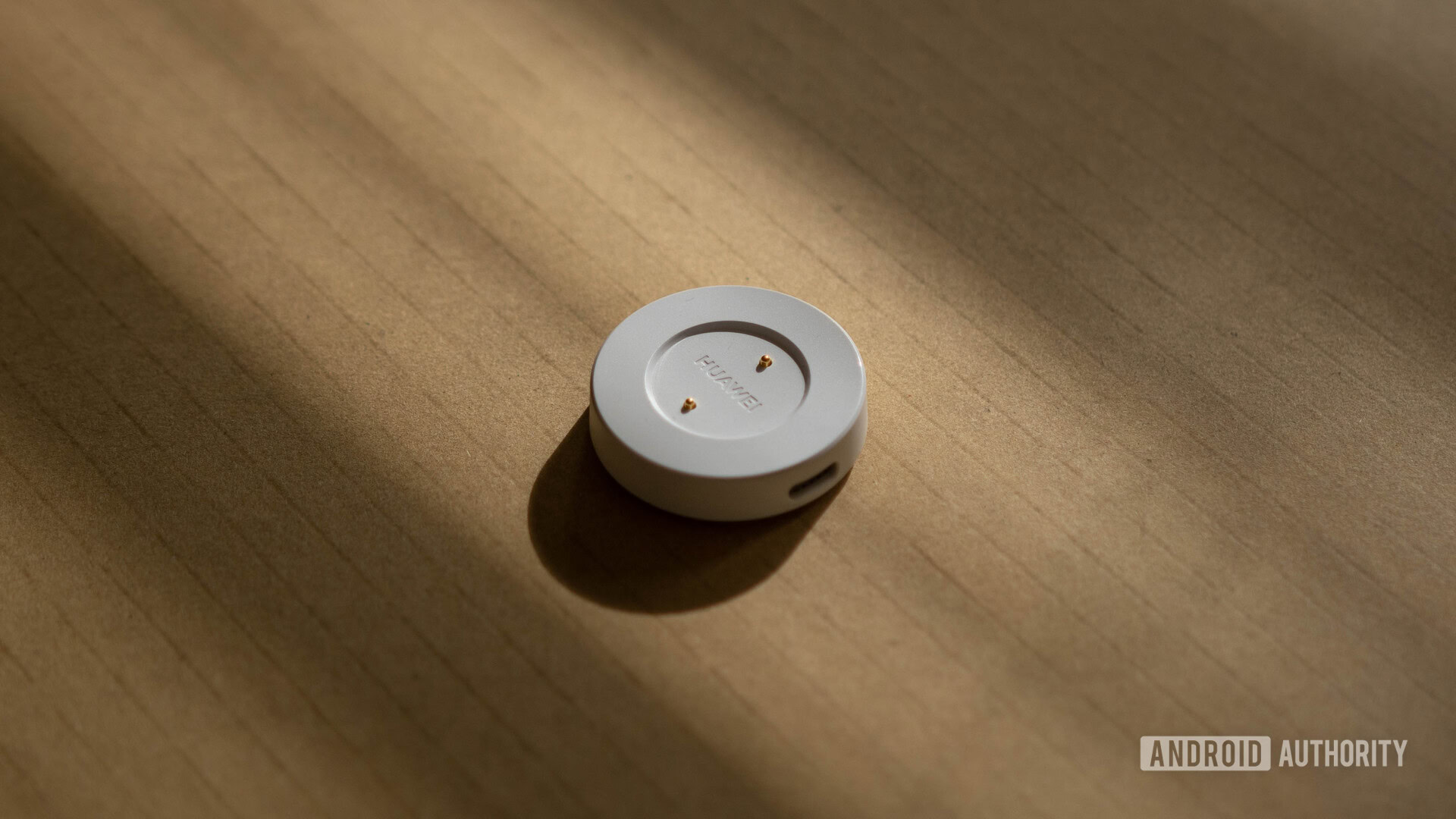
The Watch GT 2 relies on a pin-based charging puck. It’s a shame it doesn’t also charge over the almost-ubiquitous Qi standard, meaning you can’t replenish it using the reverse wireless charging option on the Mate 30 Pro. However, the puck does use USB-C, which is a nice touch, and puck charging is much faster than wireless.
The Watch GT 2 also has a speaker and a surprisingly loud one at that. It’s used primarily for taking calls on your phone, through the watch, as well as for listening to music (if you’re into that). It’s not fancy smartphone quality but considering it’s on a watch it’s quite impressive. Taking calls on the watch is a pleasant experience; the speaker is clear with no distortion in my testing, and my partner tells me that the microphone performs admirably, too.
The GT 2 doesn’t come in an LTE variant, so your phone will be the source of cellular connectivity for calls. Local storage (handled through the app) allows you to preload your favorite tunes and go for a run without taking your smartphone with you, which was perhaps the biggest omission from the original Watch GT. You can also use the Watch GT 2 to control music playback on your phone.
In China, the HUAWEI Watch GT2 received a couple more hardware SKUs. Red and white leather straps now accompany the existing trims.
Fitness and health tracking
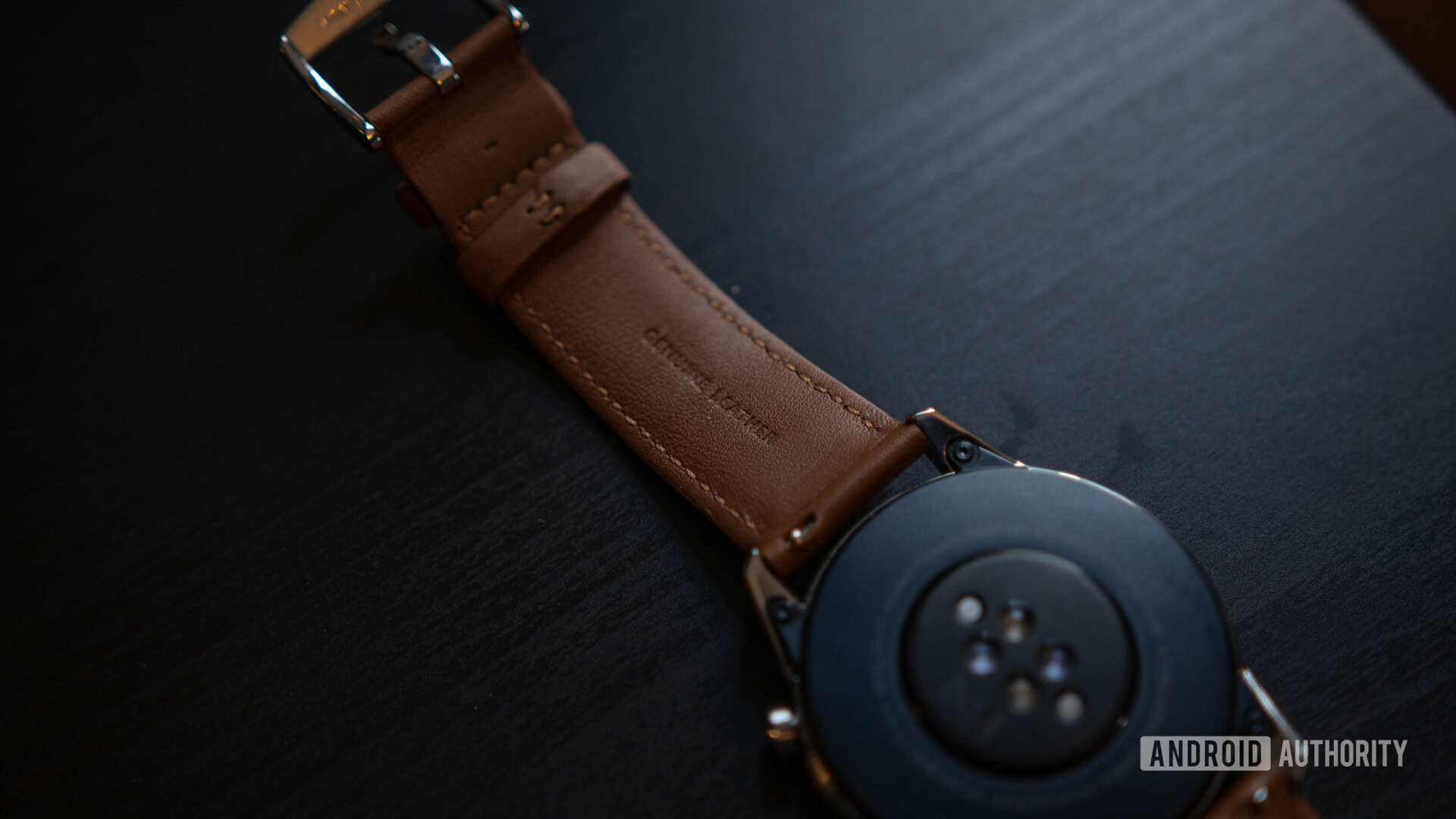
- GPS, GLONASS, Galileo
- Accelerometer, gyroscope, geomagnetic sensor, optical heart rate sensor, ambient light sensor, air pressure sensor
- Fitness, sleep, and stress tracking
The first HUAWEI Watch GT received great praise for its fitness tracking abilities. This sequel easily lives up to its predecessor, with a similarly precise array of sensors for detection and tracking. This watch is a capable fitness tracker, despite its business-leaning style. The GPS signal was always accurate (tested by comparing it to Google Maps in distance and to my Moto 360 Sport in speed), as was the elevation reading, which should ensure precise workout tracking.
Heart rate sensors are typically hit-and-miss on wearables, and the Watch GT 2 is no exception. If you really want accurate heart rate monitoring I’d recommend you go in for a Polar H10, Wahoo Tickr X, or something that mounts to your chest for higher accuracy than a smartwatch. It’s a shame I couldn’t really rely on the heart rate readings, because a lot of the other metrics of the GT 2 seemed to hold water, including things like distance and elevation, which I compared with known, accurate sources of information on the trails/coastal paths where I tested the watch.
Pressing the bottom button on the right side will put you in the workout menu with a list of preset workouts, including various runs, walks, cycles, and machines that can be specific to outdoor and indoor tracking. Examples that stand out as useful to me, personally, are pool swim, trail run, and outdoor cycle.
The assistant voice, which tells you when workouts have paused or acknowledges other actions, is super jarring. It’s loud, sharp, and aggressive, making for some embarrassing moments if you’re out in public and you alert the entire street you’re about to start a workout. You can disable it, however, it’s just hidden in the “stop workout” screen. We’d suggest you start a fake workout just to end it and mute the assistant voice permanently.
Annoying assistant voice aside, working out with this watch is quite a comprehensive experience. Even when you’re in a workout, a swipe left from the tracking screen provides quick access to music controls for either local (watch) storage, or via music apps on your phone, such as Spotify and Apple Music. Swiping up and down reveals a whole host of more detailed fitness tracking metrics. Unfortunately, advanced fitness tracking isn’t automatic, so you need to remember to activate your watch every time you start a workout if you want to track it, which is a massive letdown for me, as I can never remember to activate the feature before exercising.
Unfortunately, advanced fitness tracking isn't automatic on the Watch GT 2.
The watch will automatically track step count, heart rate, sleep, and stress, as long as you allow it through the app. The way in which it displays these metrics is pretty clear if a little rudimentary. You can’t install third-party apps you might already be tied into like Strava, Google Fit, or Komoot, but you can share data from the watch with Google Fit or MyFitnessPal.
HUAWEI announced an SpO2 monitoring feature that can measure your blood oxygen levels. This is enabled on the watch and in the companion app after updating the watch to the latest firmware.
Smartwatch features
- HUAWEI Lite OS
- Bluetooth 5.1
- NFC (China only)
- 4GB storage (2.1GB avail.)
When it comes to smart features, it all boils down to how the manufacturer has used software. HUAWEI has once again opted to use its own Lite OS, and it’s a bit of a mixed bag. It doesn’t quite have the seamlessness of Wear OS, nor the usability of WatchOS. But it certainly is light.
Swiping up from the home screen brings up your banked notifications; swiping down reveals a quick-settings shade; and swiping left or right takes you through a short carousel of screens including heart rate, stress levels, weather, music, and fitness “rings” which give you a visual overview of your daily activity progress.
In April 2021, HUAWEI rolled out software version 1.0.12.20 that brought a new weather application that supports outdoor environment information, as well as moon phase info.
The Bluetooth connection to my phone wasn’t an issue, and I never experienced any drops. The main issue I had was the watch’s lack of NFC support, which the Chinese version does have. meaning that, outside China, there’s no way to use your watch to pay for things like you can on other devices with Google Pay. This is an incredibly useful feature of WatchOS, Tizen, and Wear OS, so it’s a shame it’s missing in the global version of Lite OS. Unfortunately, you can’t reply to messages in notifications either, just read them.
Set up was quick and simple, requiring you to install HUAWEI services and the company’s Health app on your phone. It’s not a single-install affair, but it doesn’t seem as involved as Samsung’s installation process. Overall, it was only about five minutes from boot to home screen in my testing.
Also read: Why I prefer a simple smartwatch
In November 2019, a HUAWEI Watch GT 2 update brought a few new features, including the ability to quick-pair with the HUAWEI FreeBuds 3. Sound controls have been added to the settings menu for controlling call and notification volume. Raise-to-wake and heart-rate monitor sensitivity have also been optimized. Despite many claims to the contrary (including the changelog), NFC has not come to global units of the Watch GT 2. Android Authority confirmed with HUAWEI that NFC is still restricted to Chinese units (OneHop functionality is also not available on international units, again contrary to the changelog).
The HUAWEI Health app
Huawei’s Health app is pretty straightforward, both in function and design. Viewing sleep, heart rate, exercise, weight, and stress logs is really easy, thanks to the tile-based menu system across four tabs. Performance is smooth, and the graphs are clear to read at a glance, with more detail available if you don’t mind a bit of scrolling.
Gamification is the concept of turning typically mundane tasks into mini-games or challenges, and HUAWEI has done a good job of that here. There’s an awards system linked to your account where you can rack up medals by exercising and keeping to your fitness regime. However, you can’t share this data with friends, nor compete with others, which would amp up the gamification to Apple or Fitbit levels.
Scrolling over to the third tab, you’ll find the devices menu. You can add multiple wearables like dedicated fitness trackers and other watches. Tapping on your device will provide information such as battery life, watch face customization, file management, and notification preferences. From this menu, you can also update the device’s firmware and restore it to factory settings.
With over 20 watch faces on board, you’d expect some variety, but I have yet to find a face I really like. There are simple and complex options available on the watch, but the lack of a third-party store or download market is a real shame. Unfortunately, there aren’t any customizable watch faces, so making your own isn’t an option, either. There was a watch face gallery available for the original Watch GT, so we’re hoping that will also come to the Watch GT 2 in a future update. At least you can change the accent color of the always-on display, even if you only have a single digital and one analog style to choose from (just go to Settings > Display > Advanced > Lockscreen).
And as of April 2021, the watch face situation is getting a little better for iOS users. Firmware version 1.0.12.20 brings the ability for iOS users to download watch faces from the HUAWEI Health app.
Value and competition
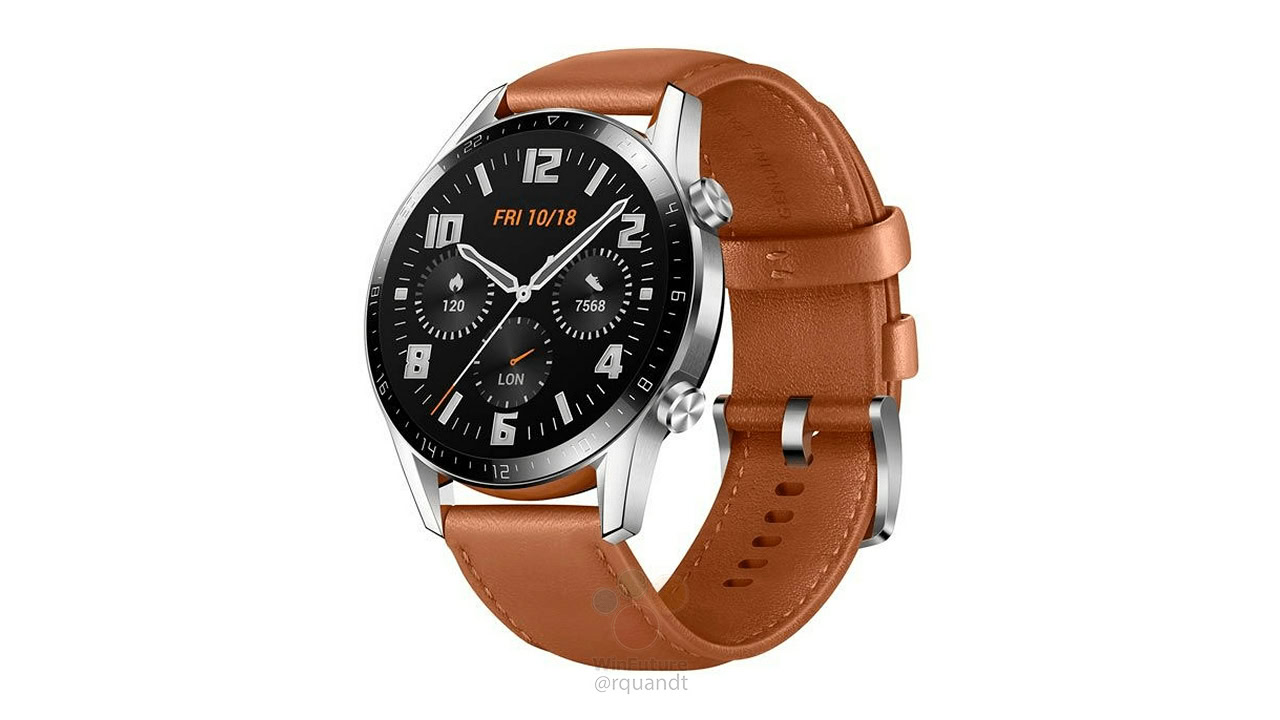
The 42mm HUAWEI Watch GT 2 normally starts at €229 (~$250), while the 46mm starts at €249 (~$279). Nowadays, it can be found online for significantly less than that. As of April 2021, it’s under $200. The HUAWEI Watch GT 2 offers great value over its competition, and when you consider the beautiful external hardware coupled with the efficient internal hardware, it makes for a fantastic value proposition.
The HUAWEI Watch GT 2's beautiful external hardware coupled with efficient internal hardware makes for a fantastic value proposition.
The Tizen-based Galaxy Watch Active 2 perhaps offers better value thanks to its more feature-rich software, as long as you’re looking for more of a smartwatch — we can’t recommend the Galaxy Watch Active 2 for its fitness features, however, as its activity tracking is just too erratic. Apple just dropped the price of its Watch Series 3 to €229 ($199), making it a great alternative to the GT 2 if you’re in the Apple ecosystem.
As for an all-rounder, the Fitbit Versa 3 is a solid recommendation thanks to its great feature set and similarly low price of €229 ($229.95) as it includes the basic necessities like NFC, an AMOLED display, solid fitness tracking, and a comprehensive app with lots of flexibility. It’s a far better smartwatch than the Watch GT 2, and with Fitbit’s pedigree in fitness tracking, very close in its fitness-tracking ability.
HUAWEI Watch GT 2 review: The verdict
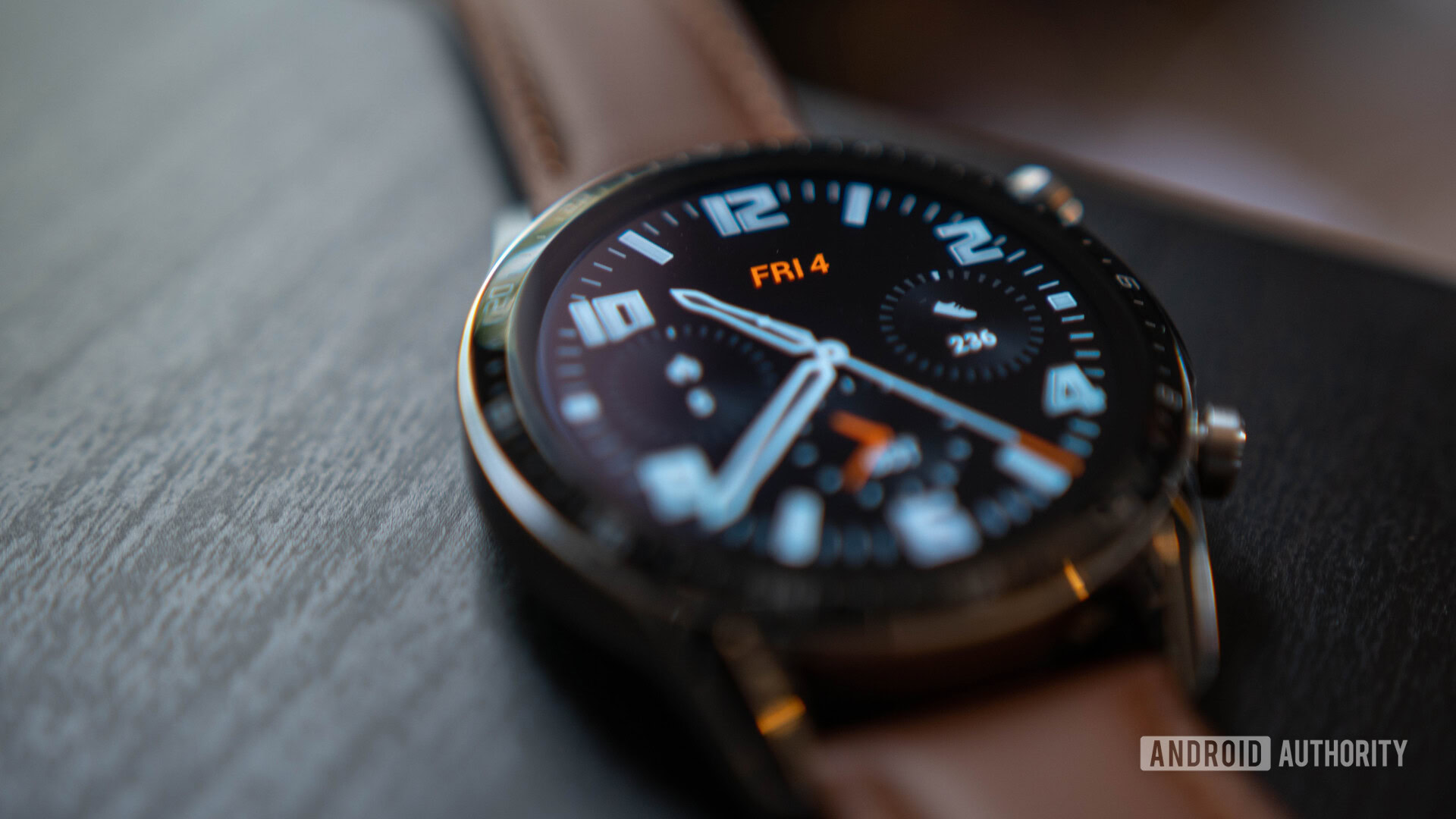
As a smartwatch, the HUAWEI Watch GT 2 is a mixed bag. The hardware is awesome — both internally and externally — but the software leaves a lot to be desired. It is a much better software experience than the original Watch GT but it still won’t be advanced enough for everyone. So it depends on what you are looking for: a limited experience with great battery life or a full-featured smartwatch with less longevity.
Battery life is certainly a strong point for the GT 2, as is its fitness tracking accuracy and value. However, between the lack of NFC, an app market, third-party app integration, and automatic workout-tracking, I don’t think I can recommend this over the Fitbit Versa 3 as a “better” smartwatch.